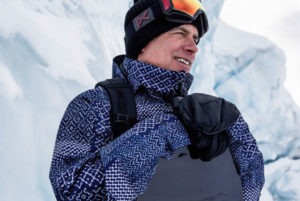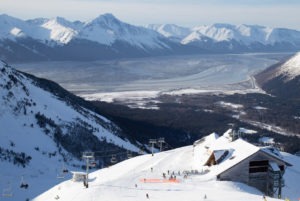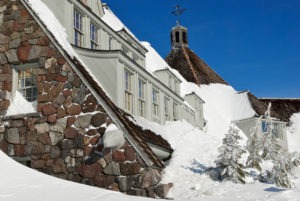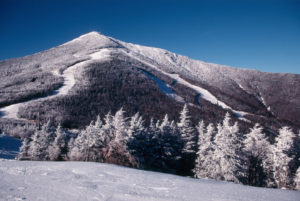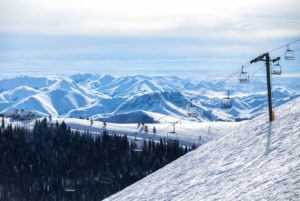Freestyle snowboarding is evolving at a frantic pace, especially after the 2010 Winter Olympics where the bar was set very high for future competitors. It’s driving riders to pursue increasing complex—and consequential—tricks, but first they have to learn them. That means the people teaching snowboarding need to advance their techniques as well. Stu Rea, director / co-founder and head coach for the Team Utah Snowboard Team, is one of the leading freestyle educators in the country. We caught up with Stu to ask him about the progression of freestyle, and the challenges teachers face in the double cork era.
He’s been snowboarding for 20 years, was born in Great Britain, but moved to New Zealand in the early nineties, then to the U.S. in 2001. Rea snowboards all around the world, and has followed ‘eternal winter’ since 1995, working back-to-back seasons in the U.S/Europe and then New Zealand.
His resume is loaded full of acronyms demonstrating his snowboard cred—USSA National Coach, USASA National Coach, USASA Coaches Trainer, AASI-W Demo Team Coach/ Manager and Head Examiner, Certified Backcountry Guide –New Zealand (SFRITO), and many more.
Rea took some time to talk about how freestyle has influenced snowboard education, and what he sees as “the next big thing.”
The House: How has snowboard education evolved to incorporating freestyle components from the beginning? When did that shift occur?
Stu Rea: “Regarding the introduction of freestyle into the instructional-based arena, I think this was a way of both retaining basic turners and holding them for longer within the classic teaching structure. Also, [we’re] moving with the times… giving the novice through intermediate riders a taste of what they see in the media.
“And we’re using freestyle maneuvers to introduce basic riding skills in a fun and energetic way, earlier on in the development of a new rider. The mainstream shift to this style of teaching and skill development was introduced in the early and mid 2000s, when snowboarding went mainstream both in the sporting world and media, also about the same time parks and pipes were being used to lure new snowsport enthusiasts to the resorts.”
House: Is it challenging to find instructors with adequate skills to teach park and pipe, particularly at a level where higher-risk tricks are part of the curriculum?
Stu Rea: “Walking the walk, physically being able to perform the skills combined with talking the talk—knowledge/technical know-how/experience/risk management—are really hard-to-find qualities in a single individual. We find we have to do a lot of internal training to achieve this goal. Now the AASI and USASA/USSA have forged strong ties (many of us being working members of both orgs), the ability to mix the coaching and instructional tools of our sport have never been better. Also many of the first competitive snowboarders are now finding employment within the instructional side of our industry.”
House: What does Team Utah offer riders that want to up their freestyle game?
Stu Rea: “Our program offers riders of all ages the ability to push themselves from the fundamental freestyle riding skills, through to the highest end competitive environment, using only certified coaches at 5 great mountains and the Olympic training facilities within our state… Utah.”
House: Where do you see snowboard education headed—what’s the next ‘big thing’ as the sport and education evolves?
“I would hate to guess this one, as the sport is about progression and it moves so fast. But I think the complex tricks, double corks, etc we started to see prior and during the Olympics, will get styled out more and bigger.
“As I said before, now that the coaching and instructional side of our sports are working closely together, in developing both LTAD (long term athlete development) and rider pipeline models, we are also able to transfer what we have learned about our sport in our own unique way to each other. The sport of snowboarding and its participants will go from just wanting to make turns down a hill, to being able to treat the mountain like a canvas, and being able to paint their own pictures.”
Check out Rea’s Team Utah for more information.




